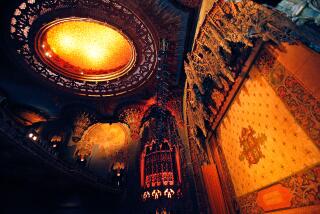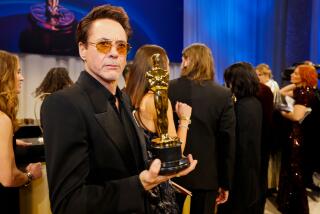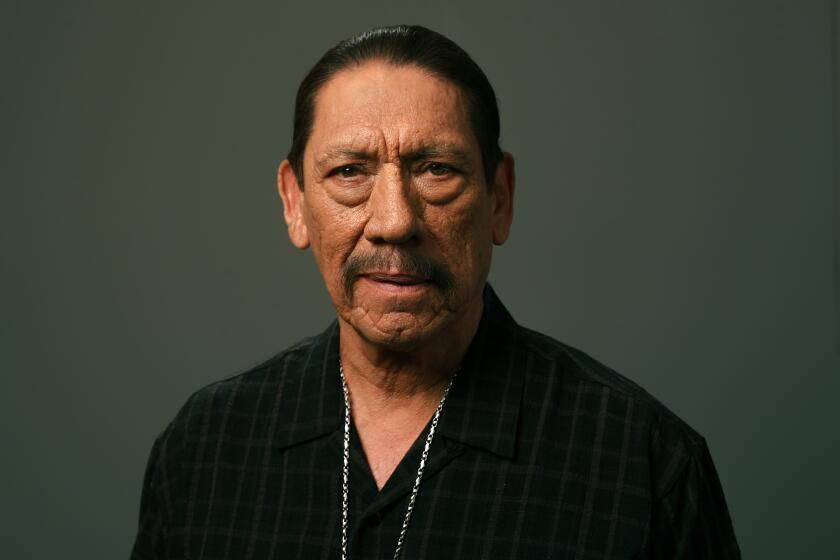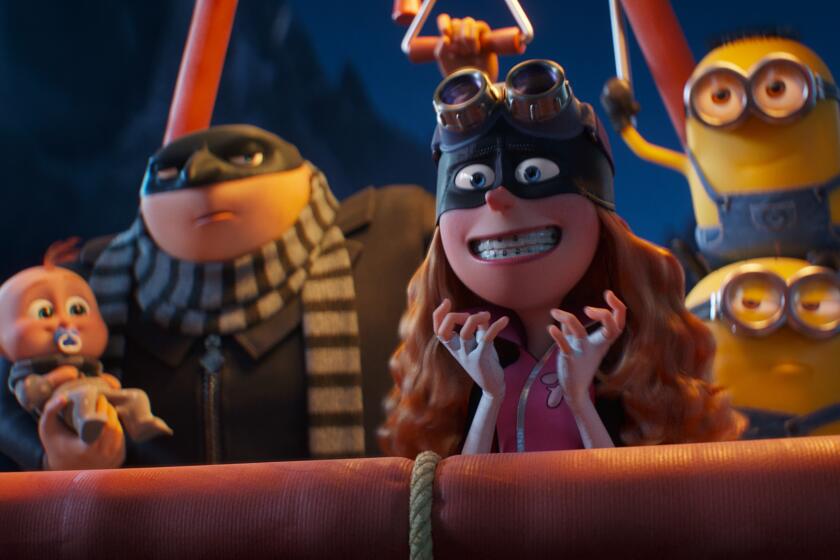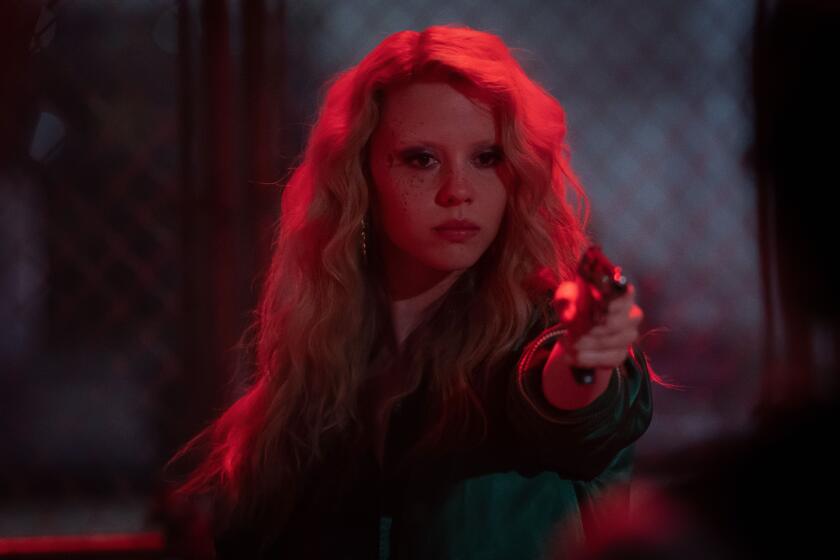From the Archives: Hostelry real star of all-star ‘Grand Hotel’
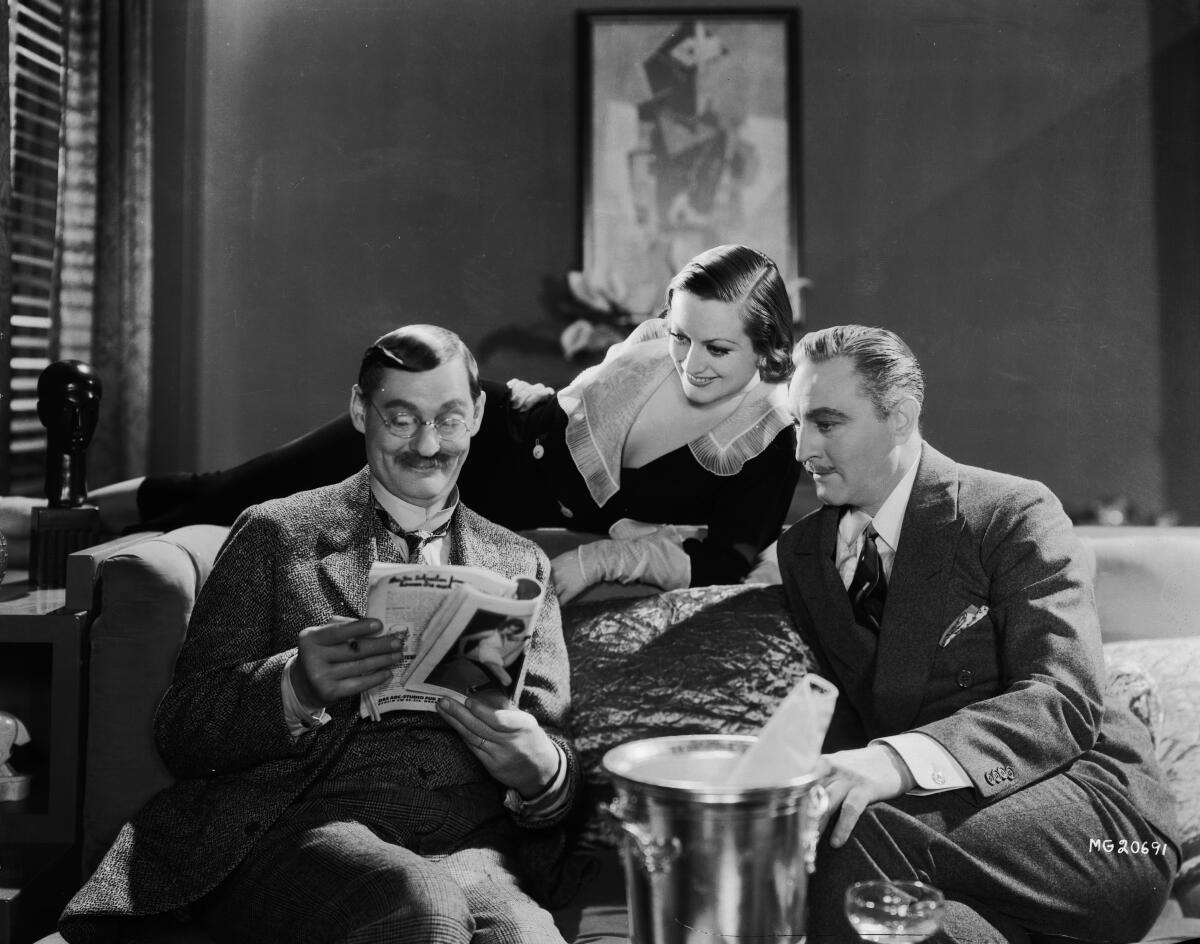
There are a hundred doors on every corridor, and no one knows his neighbor. Chambermaids never peek through keyholes. — VICKI BAUM
The great circular set into which I stepped — over cables, ropes, conduit boxes and a mass of paraphernalia — was the lobby of the Grand Hotel, nominally in Berlin, actually in Culver City. It covered two full stages and represented the last gasp in Metro-Goldwyn-Mayer’s most ambitious project: the filming of Vicki Baum’s story and play, with a cast headed by five of the foremost actors obtainable — Greta Garbo, John Barrymore, Joan Crawford, Lionel Barrymore and Wallace Beery.
From Foyer, to Bar, to Guest Suite
I watched them film the scene next to closing. It seemed terrifically complicated, almost an enterprise of engineering, at first. This was because the whole bewildering ensemble was surmounted by a gigantic crane, on the tip of which swung a cameraman and his machine; but the thing moved with such silent grace — gliding, at the pressure of a finger — that this first impression was quickly succeeded by another one. I decided that there was nothing to it at all.
In a way, of course, I was “both wrong.” The scheme had to be worked out scientifically, scene for scene; but once worked out — with actors, technicians and crane behaving as they should — it was as good as “in the can.”
DIRECTOR STILL SURVIVES
Edmund Goulding was directing. He seemed to be holding up splendidly (a fine figure of a man, with an athletic chest) in spite of having to manage as many conflicting temperaments as those belonging to the folk named above besides thousands of others. And the worst of it was already over.
His opening shot had set something of a record. It picked up John Barrymore, as the Baron, casually, at the flower stand; it followed him to the theater-ticket stall, the main desk and on to the elevators — and it introduced, en route, virtually all of the important characters of “Grand Hotel,” with the exception of Garbo as Grusinskaya, the danseuse.
This shot ran six minutes.
The lobby, done in black, red, gray, silver and gold, extended a stage-length away to steps leading to the mezzanine. Beyond, I could see the dining room softened into reality by distance. (I half listened for music, but there was none.) Everywhere about, strange semifamiliar legends met the eye. Extras and principals, their voices curiously lost in this spaciousness, strolled about, waiting for orders.
Lionel Barrymore, made up for Kringelein, the poor clerk on a spree, but looking even more like Groucho Marx, entered the scene. And here was Joan Crawford reckless, high-hearted Flaemmchen, ready to leave Grand Hotel with him.
Lights flashed on; the crane swung easily; there was a final consultation with director Goulding and the cameras turned ...
Cedric Gibbons, who designed the hotel in its entirety, sought to make it “entirely mythical.”
“It just happens to be in Berlin, and therefore, has a German influence,” he said.
THE HOTEL’S THE THING!
“The Grand Hotel is bigger than all the people who come and go within its walls. We went about preparing the sets with the view of bringing the background forward on the same plane as the players. The human characters are important. But in this story, the hotel is even more so.”
Only in the bedrooms — where Gibbons recalls, “a man’s home is his castle” — is the dominating motif subordinated to the lesser ones of the occupants. Here the sets are “backgrounds.” Gibbons planned the lobby in such a manner that the camera was enabled to describe a complete circle of 360 degrees. In the exact center, he placed the desk; a camera here would, like Senf, the chief clerk, be the strategic eyes and ears of the entire lower floor.
“Another advantage of this circular effect is,” Gibbons explained, “that the camera can turn quickly from one person or group to another, and all are in sharp focus — the distances from the lens being practically uniform.”
BOOK AND PLAY ADAPTED
The floor, laid out in checker design, caught my eye. The squares, large toward the circumference, dwindled in size toward the center.
More — they ceased to be squares, growing flat and elongated, as though the colors had “run.” This effect, I was told, would create an illusion of depth in the camera’s eye. ...
Goulding, who did his own adaptation for the films, took both book and play and combined features of each. The “telephone prologue” he retained, but his subsequent action encompasses a far greater latitude than the dramatic version. Yet the camera never leaves the four walls of Grand Hotel.
In passing, it may be noted that the research department of the studio was called upon to answer some 800 questions regarding what the proper deportment in such an establishment as the Grand (or the Adlon, which suggested it) would be.
These questions ranged from the style in which a telephone operator would wear her hair and the usual disposition of corpses, to the recipe for a Louisiana Flip. Stumped momentarily, in the first two instances, the research department promptly prescribed white of egg, orange flowers, Kirsch Wasser, lemon juice and sugar in the third.
More to Read
Only good movies
Get the Indie Focus newsletter, Mark Olsen's weekly guide to the world of cinema.
You may occasionally receive promotional content from the Los Angeles Times.
